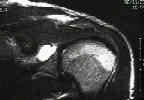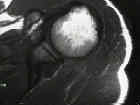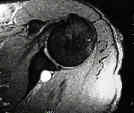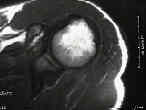- Anatomy:
- suprascapular nerve is derived from upper trunk of brachial plexus, typically receiving fibers from C5 and C6;
- it contains both motor and sensory components, and sends sensory branches to both the glenohumeral and AC joints,
but does not innervate the skin;
- it passes downward, laterally (deep to the omohyoid and trapezius & then posteriorly to run under cover of trapezius;
- along with the suprascapular vein and artery, it reaches suprascapular notch;
- the nerve travels beneath the suprascapular notch, where as the vessels travel above the notch;
- after giving off 2 branches to supraspinatus, it passes around lateral border of the scapular spine (spinoglenoid notch and ends in the
infraspinatus fossa to supply infraspinatus);
- Suprascapular Nerve Entrapment:
- 2 points of fixation of nerve are at its origin from upper trunk & at suprascapular notch, where it is susceptible to traction injury;
- it is fixed at its origin from C-5 or upper trunk of brachial plexus and at its termination in infraspinatus;
- compression at the notch:
- may be compressed by either the suprascapular ligament or a cyst (arising from the shoulder joint) which results in paralysis of
supraspinatus and infraspinatus;
- following blunt trauma, the ligament may calcify (causing compression);
- compression at the level of the supraspinatus notch would be expected to affect both the supraspinatus and infraspinatus;
- Radiologic Case Study. Spontaneous resolution of a spinoglenoid notch gang
- Combined intra- and extra-articular arthroscopic treatment of entrapment neuropathy of the infraspinatus branches of the suprascapular nerve caused by a periglenoidal ganglion cyst.
- Editorial Commentary: Suprascapular Neuropathy in Overhead Athletes: To Release or Not to Release?
- may be injured during birth (See Erbs palsy)
- some recognize that the supraspinatus tendon & its muscle should not be dissected and elevated from contiguous bone floor for
distance exceeding 2 cm medial to superior glenoid rim;
- otherwise, nerve injury and additional weakening of the external rotator muscles could result;
- additional site of iatrogenic injury may occur at the spinoglenoid notch, from instrumentation during rotator cuff repair;
- compression at the level of the spinoglenoid notch would be expected to affect only the infraspinatus;
- management:
- patients should have an MRI to rule out an anatomical etiology;
- EMG is useful to help localize the site of compression;
- w/ nerve compression, expect sharp positive waves, insertional activity, fibrillations, spontaneous rest activity, and
decreased recruitment;
- major changes in nerve conductions studies will be variable;
- when an anatomical etiology cannot be found, management should be non operative as most patients will have a good to
excellent result with physical therapy;
- physical therapy should emphasize not only the rotator cuff musculature but also all of the muscles that cross the shoulder
Surgical Anatomy of the Supraclavicular Brachial Plexus
Suprascapular neuropathy in volleyball players.
Suprascapular nerve entrapment. Diagnosis and treatment.
Suprascapular nerve entrapment. A series of 27 cases.
Suprascapular nerve block. A new approach for the management of frozen shoulder.
Suprascapular nerve entrapment.
Suprascapular neuropathy in the differential diagnosis of rotator cuff injuries.
Suprascapular nerve injuries with isolated paralysis of the infraspinatus.
Suprascapular neuropathy. Results of non-operative treatment.
Entrapment of the suprascapular nerve.
Percutaneous Arthroscopic Release of the Suprascapular Nerve
Long-term results of suprascapular pulsed radiofrequency in chronic shoulder pain
Suprascapular nerve block results in a compensatory increase in deltoid muscle activity
Clinical outcomes of suprascapular nerve decompression
Suprascapular neuropathy in a shoulder referral practice





